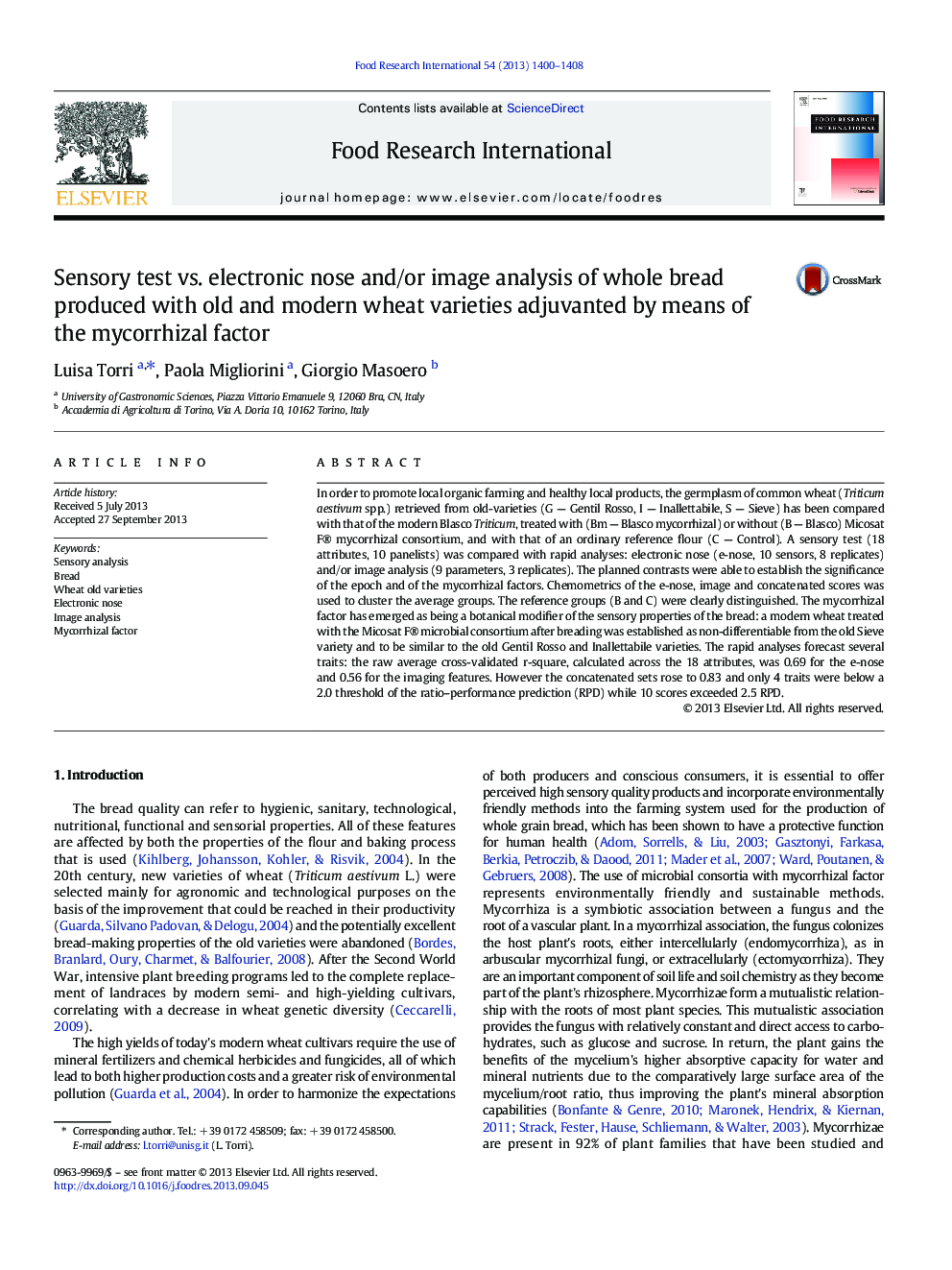| Article ID | Journal | Published Year | Pages | File Type |
|---|---|---|---|---|
| 6397310 | Food Research International | 2013 | 9 Pages |
Abstract
In order to promote local organic farming and healthy local products, the germplasm of common wheat (Triticum aestivum spp.) retrieved from old-varieties (G - Gentil Rosso, I - Inallettabile, S - Sieve) has been compared with that of the modern Blasco Triticum, treated with (Bm - Blasco mycorrhizal) or without (B - Blasco) Micosat F® mycorrhizal consortium, and with that of an ordinary reference flour (C - Control). A sensory test (18 attributes, 10 panelists) was compared with rapid analyses: electronic nose (e-nose, 10 sensors, 8 replicates) and/or image analysis (9 parameters, 3 replicates). The planned contrasts were able to establish the significance of the epoch and of the mycorrhizal factors. Chemometrics of the e-nose, image and concatenated scores was used to cluster the average groups. The reference groups (B and C) were clearly distinguished. The mycorrhizal factor has emerged as being a botanical modifier of the sensory properties of the bread: a modern wheat treated with the Micosat F® microbial consortium after breading was established as non-differentiable from the old Sieve variety and to be similar to the old Gentil Rosso and Inallettabile varieties. The rapid analyses forecast several traits: the raw average cross-validated r-square, calculated across the 18 attributes, was 0.69 for the e-nose and 0.56 for the imaging features. However the concatenated sets rose to 0.83 and only 4 traits were below a 2.0 threshold of the ratio-performance prediction (RPD) while 10 scores exceeded 2.5 RPD.
Related Topics
Life Sciences
Agricultural and Biological Sciences
Food Science
Authors
Luisa Torri, Paola Migliorini, Giorgio Masoero,
